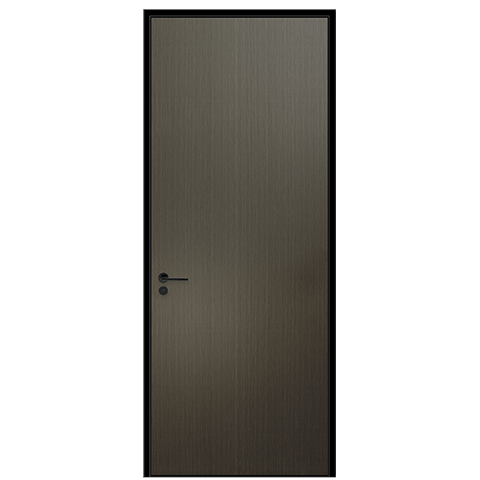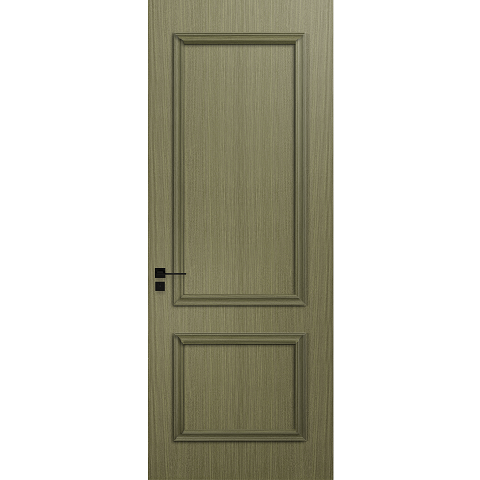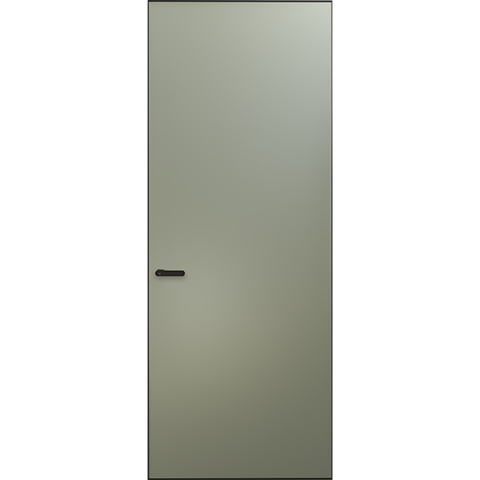Do you know these basics of uPVC profiles?
Classification of uPVC profiles doors and windows
1) According to the opening method, it is divided into: fixed window, upper-hung window, middle-hung window, lower-hung window, vertical revolving window, casement door and window, pulley casement window, pulley window, casement lower-hung door and window, sliding door and window, sliding flat Window opening, folding door, floor spring door, lifting sliding door, sliding folding door, inward sliding door.
2) According to performance, it is divided into: ordinary doors and windows, sound insulation doors and windows, thermal insulation doors and windows.
3) According to the application part, it is divided into: inner doors and windows, outer doors and windows.
4) According to surface treatment: white whole body, color whole body, two-color arch extrusion, carved arch extrusion
① Casement doors and windows:
Advantages: large opening area, good ventilation, good sealing, excellent sound insulation, heat preservation and impermeability. The inward opening type is convenient for cleaning windows; the outward opening type does not occupy space when opened.
Disadvantages: The window width is small and the field of vision is not wide. Opening a window outside the wall takes up a space outside the wall, which is easily damaged when there is a strong wind; while a window opening inside takes up part of the interior space, and it is inconvenient to use screen windows, and it is also inconvenient to use screens and curtains when opening windows. , If the quality is not good enough, it may seep rain.
② Sliding doors and windows:
Sliding window: There are two types: left and right, up and down. The most used is the sliding window.
Advantages: simple and beautiful, large window width, large glass block, wide field of vision, high lighting rate, easy to clean glass, flexible use, safe and reliable, long service life, open in one plane, occupy less space, easy to install screen windows, etc.
Disadvantages: The two windows cannot be opened at the same time, only half of them can be opened at most, and the ventilation is relatively poor; sometimes the sealing is also slightly poor.
③ Down hang:
Bottom-hung window: This is an aluminum alloy, uPVC profile window that appeared later. It is a new form developed on the basis of casement windows. It can be opened in two ways, either flat or pushed from the top. When the casement window is closed, pull the upper part of the window inward to open a gap of about ten centimeters, that is to say, the window can be opened a little from the top down, the opened part is suspended in the air, and it is fixed with the window frame through hinges, etc. , so it is called the underslung type.
Advantages: It can not only ventilate, but also ensure safety. Because of the hinge, the window can only be opened by a gap of ten centimeters, and it is impossible to reach in from the outside. It is especially suitable for use when there is no one at home. This function is not limited to casement windows, sliding windows can also be opened by hanging down.
Performance of uPVC profiles doors and windows
1) Thermal insulation and energy saving
uPVC profile doors and windows are multi-cavity structures with good thermal insulation performance. Its heat transfer performance is only 1/357 of that of steel and 1/250 of that of aluminum. It can be seen that plastic doors and windows have significant thermal insulation and thermal insulation effects, especially for those with Modern buildings with heating and air conditioning are more suitable. The relevant departments have investigated and compared this, that is: the indoor temperature of the room using uPVC profile doors and windows can be 4-5 degrees higher in winter than the rooms using wooden doors and windows; the effect of using double-layer glass is better in northern areas. According to the test of the Institute of Physics of the Construction Research Institute, the heat transfer coefficient of single glass fiber reinforced plastic and aluminum windows is 64W/M2K; the heat transfer coefficient of single glass uPVC profile window is about 47W/M2K; the heat transfer coefficient of ordinary double glass steel and aluminum windows is The coefficient is about 3.7W/M2K; while the heat transfer coefficient of the double-glass plastic steel window is about 2.5W/M2K. Doors and windows account for 30% of the building's outer protective structure area, and its heat dissipation accounts for 49%. It can be seen that uPVC profile windows have good energy-saving benefits.
2) Physical properties
The physical properties of uPVC profile doors and windows mainly refer to: air permeability (air tightness), rainwater leakage (water tightness), wind pressure resistance and thermal insulation and sound insulation properties of uPVC profile doors and windows. Because the uPVC profile door and window profile has a unique multi-chamber structure and is made of doors and windows by welding process, all the gaps are equipped with door and window sealing strips and tops during the installation of uPVC profile doors and windows, so it has good physical properties.
3) Corrosion resistance
uPVC profile windows and doors have good corrosion resistance due to their unique formula. Secondly, the corrosion resistance of uPVC profile windows depends on the use of hardware: in normal environments, hardware is metal products, while industries in corrosive environments, such as For food, medicine, sanitation, chemical industry and coastal areas, rainy and humid areas, use anti-corrosion hardware (engineering plastics), whose service life is 10 times that of uPVC profile doors and windows.
4) Weather resistance
uPVC profile doors and windows use a special formula, adding ultraviolet absorbers and low temperature impact agents to the raw materials, thereby improving the weather resistance of uPVC profile doors and windows. It has been used for a long time in a temperature and climate environment, between 130°C and 70°C, and there is no discoloration, deterioration, aging, embrittlement and other phenomena in the changes of hot sun, heavy rain, dryness and humidity. uPVC profile windows have been used in Western Europe for 30 years, and the material is as good as ever.
5) Insulation properties
uPVC profile doors and windows use the excellent electrical insulator of the profile, which is non-conductive and has a high safety factor.
6) Air tightness
The quality of uPVC profile doors and windows is fine and smooth, the quality is consistent inside and outside, no special surface treatment is required, easy to process, after cutting and welding processing, the length, width and diagonal of the finished doors and windows can be within plus or minus 2MM, processing accuracy, angular strength Up to 3000N or more.
7) Sound insulation performance
It is mainly due to the sound insulation effect of glass that occupies about 80% of the area. Some sound insulation uPVC profile door and window products on the market use different glass combination structures according to the principle of sound wave resonance transmission and coupling, such as insulating glass uPVC profile windows, ordinary double-layer windows. Glass, enhance the sound insulation effect of doors and windows. In terms of door and window structure, the use of high-quality adhesive strips and plastic sealing accessories makes the sealing performance of uPVC profile doors and windows remarkable.
8) Fire resistance
The fire resistance of uPVC profile doors and windows is slightly poor, and it will emit toxic emissions when burning. If the fire protection requirements are relatively high, it is recommended to use aluminum alloy materials.
9) Rigid and brittle
Due to the poor rigidity of PVC materials and the brittleness of uPVC profile materials, it is necessary to add steel bars inside to increase the hardness, which is heavier than aluminum alloys.
Maintenance of uPVC profiles doors and windows
1) In order to give full play to and utilize the advantages of uPVC profile doors and windows and prolong the service life of uPVC profile doors and windows, during use, attention should also be paid to the maintenance and maintenance of uPVC profile doors and windows:
① The dust on the doors and windows should be cleaned regularly, and the doors and windows, glass and hardware should be kept clean and bright.
② If the doors and windows are contaminated with oil stains and other difficult-to-clean things, you can scrub them with Jieerliang, but it is best not to use strong acid or strong alkali solution for cleaning, which will not only easily damage the surface finish of the profiles, but also damage the surface of the hardware. Corrosion of hardware caused by protective film and oxide layer.
③ The particles and other debris inside the frame should be cleaned in time to prevent them from blocking the drainage channel and causing poor drainage and water leakage.
④ When opening doors and windows, the force should be moderate, and try to keep the speed even when opening and closing.
⑤ Try to avoid hitting the doors and windows with hard objects or scratching the surface of the profile.
⑥ When the doors and windows are found to be inflexible or other abnormal conditions during use.
2) When the door and window installation team of the assembly plant completes the door and window installation, due to the carelessness of the wall decoration personnel, the thickness of the filling foaming agent is often uneven or sticky on the uPVC profile doors and windows. Sometimes, stubborn stains also exist. At this point, we can:
① Use a shovel to level the convex part of the filling, and smooth it with sandpaper.
② If there is painted decoration, the leveled part can be treated with paint of the same color.
③ Scrub the surface of the profile with water to remove general dust.
④ Use white cotton gauze dipped in ethyl acetate to scrub stubborn stains, and then scrub with water.
3) One of the advantages of uPVC profile doors and windows is that maintenance is basically unnecessary. However, considering that many uPVC profile door and window profiles are improperly selected or of poor processing quality, it is recommended that users should check and maintain them once every six months to a year. Generally check the following five areas:
① Check whether there are cracks in the profile welds of door and window frames and fans.
② Whether there is obvious deformation, warping or sagging of the casement sash of the door and window sash.
③ Check the sealing strip and leather strip for shrinkage, deformation and voids.
④ Whether the hardware accessories are cracked, damaged or tight.
⑤ Whether the drainage holes are unobstructed.
Matters needing attention for uPVC profiles doors and windows
① After the doors and windows are installed, the protective film on the surface of the profile should be torn off in time and cleaned; otherwise, a large amount of the adhesive of the protective film will remain on the profile, which is very unsightly and difficult to be cleaned. .
② When the wind blows, the casement window sash should be closed in time.
③ Do not hang heavy objects on the door and window hardware.
④ The casement lower-hung window can be opened differently by changing the opening direction of the handle. It is necessary to understand how to operate to avoid damage.
⑤ When the sliding doors and windows are in use, the sliding track should be cleaned frequently to keep it clean, so that there is no hard particle material on the surface of the track and in the groove.
⑥ Plastic door and window products are equipped with drainage and decompression systems in the window frame, window sash and other parts to ensure the airtight performance and watertight performance of the doors and windows. In order to avoid the decline of the drainage performance of doors and windows, and the infiltration of rainwater in rainy and snowy weather, it will bring inconvenience to daily life and work.
⑦ When the sliding window is pushed and pulled, the force point should be in the middle or lower part of the window sash.
⑧ When cleaning the gauze fan, the user should not remove the rubber strip that fixes the gauze mesh and take down the gauze mesh, but should remove the gauze fan as a whole, and scrub it with a water-soluble detergent and a soft cloth.
⑨ When the screen fan is not in use in winter, the user can remove the screen window for storage as needed. The yarn fan should be stored at a distance of 1 meter away from the heat source. It should be placed horizontally or vertically on the short side. It should not be pressed with hard objects to avoid deformation.
⑩ When the screen fan of the sliding window is in use, please pay attention to coincide with the vertical frame of the inner sliding fan, so as to maintain a good airtightness.
5 strokes to distinguish whether uPVC profiles doors and windows are toxic
1) Look at the product profile name. Toxic uPVC profile doors and windows generally use inexpensive lead salt stabilizers as the main raw materials. This raw material contains lead and is named "PVC profile". Non-toxic uPVC profile doors and windows use non-toxic, non-polluting and environmentally friendly thiol organotin T-137 stabilizer, named "VPVC profile".
2) Look at the packaging logo. Look at the product name, implementation standard, factory name, factory address, quality grade, etc. marked on the product packaging or label. For example, whether the basic content is complete, and whether there is ghosting or deviation in the color registration of the text or pattern. If the content of the packaging logo is incomplete, and the text or pattern is overprinted with ghosting or deviation, it must be produced by a small profile enterprise, and it is best not to buy it.
3) Look at the quality inspection certificate. After choosing uPVC profile doors and windows, be sure to ask the dealer for a certificate of product quality inspection. If the inspection items of the certificate or inspection report are marked with lead content, it proves that the product is a PVC profile.
4) Look at the color of the product. The color of toxic uPVC profile doors and windows is white. Although it is white, the intuitive feeling is very "frozen", that is, it is dark or blue in white, with a strong sense of smoothness. After a period of use, it will gradually appear due to sulfur and sulfide pollution in the atmosphere. Gray-black. The non-toxic uPVC profile is pure in color, like ivory white, smooth and translucent, soft, and has a feeling of penetration, and will not be gray-black when polluted by sulfur and sulfide in the atmosphere.
5) Look at the effect of use. Lead salt uPVC profile doors and windows will form lead dust on the surface under the long-term action of sunlight and heat, which will cause lead poisoning and lead pollution. After the lead enters the human body, except part of it is excreted through feces and sweat, most of it is deposited in the bone marrow and melted into the blood, damaging the bone marrow hematopoietic system, cerebral nervous system, urinary system and reproductive organs. Lead can also hinder the body's blood synthesis, leading to anemia, headache, dizziness, fatigue, drowsiness, constipation and limb aches and other symptoms. The above symptoms will not occur with the use of organotin uPVC profile doors and windows.
 Hot Recommendation
Hot Recommendation
 Latest Products
Latest Products



